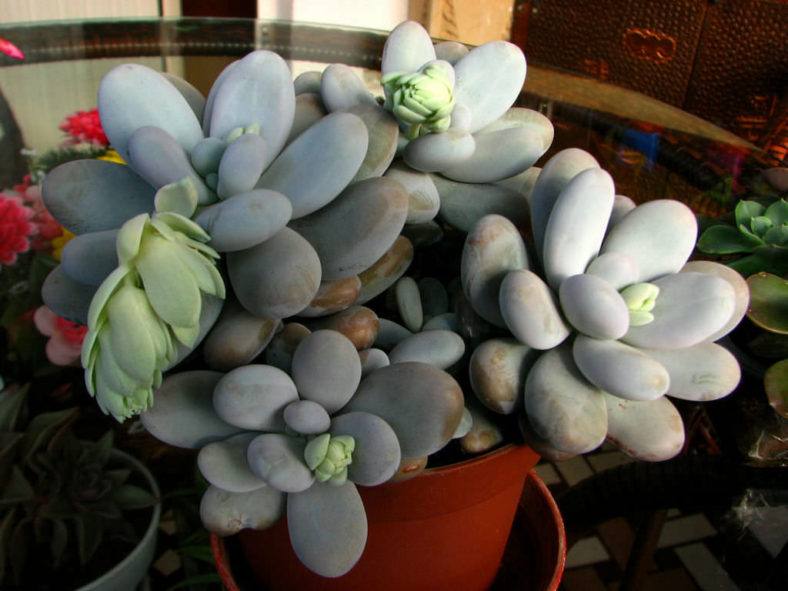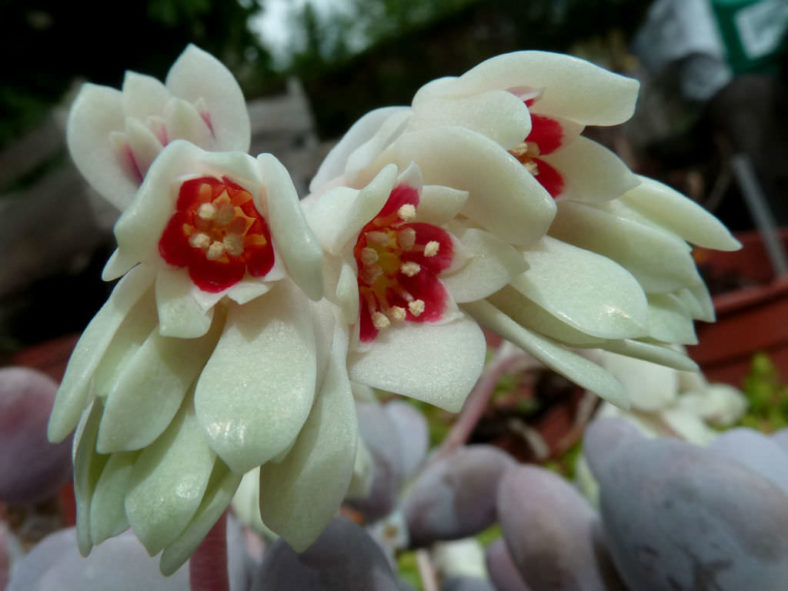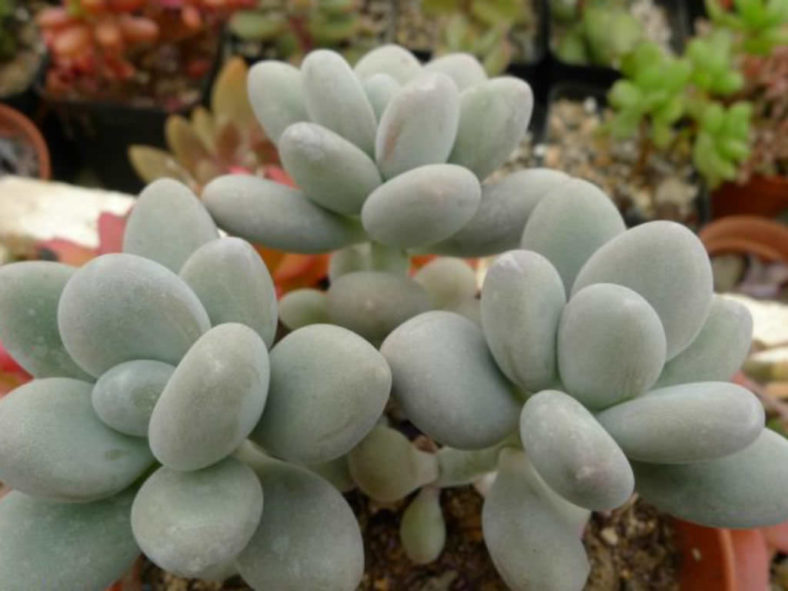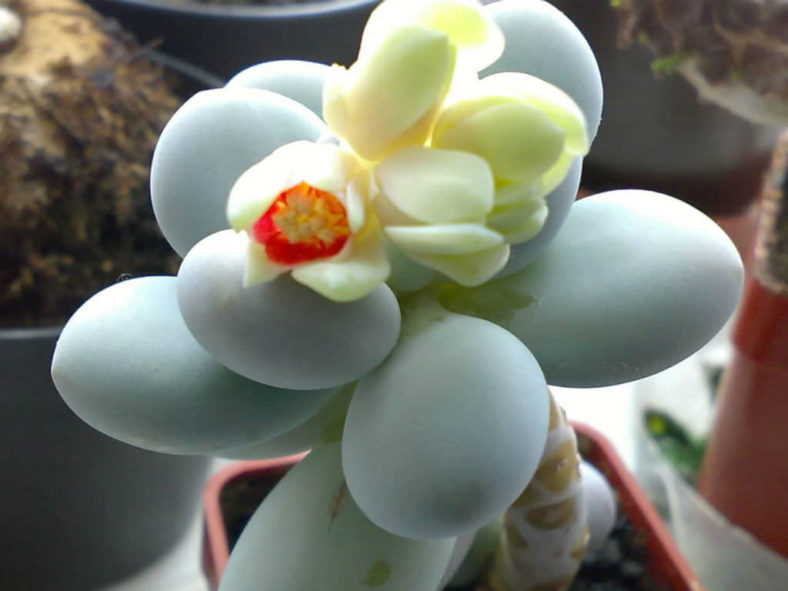Scientific Name
Pachyphytum oviferum Purpus
Common Name(s)
Moonstones, Pearly Moonstones, Sugaralmond Plant
Scientific Classification
Family: Crassulaceae
Subfamily: Sedoideae
Tribe: Sedeae
Subtribe: Sedinae
Genus: Pachyphytum
Etymology
The specific epithet "oviferum" (pronounced "oh-VEE-fer-um") means "egg-bearing" and refers to the shape of the leaves of this species.
Origin
Pachyphytum oviferum is native to Mexico. It grows on rock cliffs in San Luis Potosí at about 3,940 feet (1,200 m) above sea level.
Description
Pachyphytum oviferum is a popular clump-forming succulent with chubby, pale blue-green to bluish-purple leaves arranged in a rosette at the ends of short stems. The rosettes can reach a diameter of 4 inches (10 cm). Initially, the stems are erect, becoming decumbent to pendent as they grow, and can reach lengths of up to 8 inches (20 cm) and diameters of 0.5 inches (1.3 cm). The leaves are obovate to elliptic, measuring up to 2 inches (5 cm) in length, 1.2 inches (3 cm) in width, and 0.7 inches (1.8 cm) in thickness.
The bell-shaped flowers appear in clusters on arching stalks from winter to early spring. They have cream-colored petals, apically marked with a faint, round, dark purple-red spot, and are covered with greenish-white sepals. The flower stalks can reach a length of up to 12 inches (30 cm).

Forms of Pachyphytum oviferum
Hybrids of Pachyphytum oviferum
How to Grow and Care for Pachyphytum oviferum
Hardiness: USDA hardiness zone 10a to 11b: from 30°F (-1.1°C) to 50°F (10°C).
Pachyphytum will not tolerate frost well. Temperatures below 20°F (-6°C) will kill the plant, and temperatures that may go below 45°F (7°C) during the extended period should be avoided. It tolerates high heat and intense sunlight. As with most succulents from the Crassulaceae family, Pachyphytum can tolerate (and even appreciate) poor soil conditions, so long as it is well-draining. It can thrive in full or partial sunlight.
Allow the soil to dry before watering, and avoid getting water on the leaves. The plants will require more water in winter as they begin their active growth season. If you are unsure when to water your plant, watch the lowermost leaves for signs of drying and water them then. Pachyphytum is far more likely to survive under-watering than over-watering. The thick, fleshy leaves will appear wilted and slightly "under-full" when they need water.
One of the most common pests of houseplants is the mealybug, and your Pachyphytum may fall prey to this pest. The symptoms of a mealybug infestation are slowed or stopped growth (though in summer, this is a typical sign of dormancy).
See more at How to Grow and Care for Pachyphytum.
Links
- Back to genus Pachyphytum
- Succupedia: Browse succulents by Scientific Name, Common Name, Genus, Family, USDA Hardiness Zone, Origin, or cacti by Genus
Photo Gallery
Click on a photo to see a larger version.


